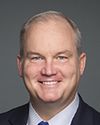Thank you very much.
It's a real honour to be presenting and discussing this issue with you. Rather than making a major formal presentation, I'm going to leave some room for a dialogue, because I know that over the course of your deliberations you have had a lot of presentations that tell you about the scourge of depression and PTSD affecting people of all stripes, including first responders and people in uniform as well as first nations populations. I'm sure you have been well briefed on the immense suffering of their comrades, their families, and their friends, but I'm here today to tell you why I believe the situation is not getting better.
I hear a lot of unsettling statistics about how, as the population returns from Afghanistan, there is going to be a higher rate of PTSD, that the cost of medical marijuana is projected to increase to something like $30 million, and that the rates of suicide are not decreasing and if anything are on the rise.
I would like to share my views on how we could collectively try to correct the course trajectory of these kinds of statistics. I think my plea would be that we need to take research and innovation much more seriously than we have to date, because if we do business the same way as we have always been doing, we cannot expect different outcomes. The different outcomes are really going to come through research and innovation.
Let's do a bit of a reality check. We are successfully treating only about a third of the people suffering from depression and post-traumatic stress disorder—only a third. Another third are really not responding too well, so they are not ready to go back to work. The last third will not respond no matter what you do. It doesn't matter what treatment regimes we have.
Our treatments are taking far too long to kick in and, when they do kick in, they're not very enduring. Why? It's because the way we diagnose and treat medical conditions leaves a lot to be desired. There's much need for improvement.
Let us first talk about the treatments, or I'd say lack of adequate treatments.
As I said, we only bring about a third of people into remission, and the other two-thirds are doing poorly. Even in the third who are showing a positive response, many will relapse within the first year. If you had a situation like this for heart disease or for diabetes, we would not accept it. Why do we accept this for mental illness? It really boggles my mind. We need to move ahead on this front.
One of the problems is that we continue to diagnose mental illnesses by symptoms. People ask you how you feel, and then you may describe your symptoms, and there's a checklist that people go through. Then they say, “You pass the threshold, we give you this diagnosis.”
However, you all know and we all know that there is a huge amount of variability in the symptoms that people express, either symptoms that affect people or the symptoms that affected people want to communicate to you and talk to you about. There's a lot of variability. There can be a variety of emotional symptoms, for example, including depression, worry, intense feelings of guilt, and emotionality. There are intrusive thoughts of various kinds, including memories and sleep disturbances. As well, there are a variety of physical symptoms: neurological, respiratory, musculoskeletal, and cardiovascular.
The symptoms may manifest themselves within months of a traumatic event or years after a traumatic event. They may appear after a single episode of stressure or they may appear after a protracted series of traumatic experiences, as with multiple combat situations.
The point I'm trying to make is that there's a huge amount of variability in the factors that precipitate things such as depression and post-traumatic stress disorder, and the ways in which people express those symptoms are variable.
Then we have these diagnostic scales that are entirely based on the symptoms. We have no blood tests. We have no brain scans. These are the kinds of tests that we have come to expect for heart disease, cancer, and other things, but not for mental illness. We don't have those. As a result, two people can have extremely different symptom expressions, yet they'll both be given the same diagnosis and they'll both possibly end up getting the same kind of treatment. No wonder our treatments don't work well.
Why are we in this predicament? Why is this so different from other medical conditions? After all, this is a medical condition. I think we have to begin to focus a bit more on biology, because our diagnostics right now are agnostic of biology. It's all based on symptoms. Also, we need to develop biomarkers through blood tests and brain scans.
In terms of technology, I think we are at a stage where there have been huge advancements in terms of both genetics and, for example, imaging. We recently invested a huge amount of resources into creating a brain imaging centre at The Royal. The reason we did it is that we wanted to provide a platform that could help us peer into the living brain.
How can you treat an organ that you can't see? You take your car to a mechanic because you know that he knows how the car works. He can see it, he can open your engine, and he can feel it. You can't do that to the brain. Your brain is locked away in the vault of your skull. There is no easy way to get to it. You can't get to it, you can't feel it, you can't pulse it, and you can't see a lump as you can for a cancer. You need to peer inside the living brain to see what is happening. You need to do a sort of non-invasive biopsy of the living brain so that you know what's going on.
In the case of mental illness, we know it's brain based. We need to peer in. It's not just a matter of looking into the brain for abnormalities that are anatomical. I don't think there will be anatomical abnormalities. What is happening is that some circuits within the brain are starting to malfunction. What we need to find out is which ones are the rogue circuits. Where is it that certain symptoms are expressing themselves? How can we use the technologies we have, and other means, to better diagnose—to diagnose early and diagnose precisely, and to know what is causing the illness so that we can specifically treat it in a personalized way, as we do for other illnesses?
For example, if you have a cancer, they'll do a scan. They'll tell you the regions in your body where they see growths. Then they'll do a biopsy and identify the cell type. Then they'll do a spectrum analysis on the cell and say what chemotherapy they think is very specific for that cell type, and that's what they'll put you on. This is all evidence based.
It's my dream that this is where we will get to in terms of mental illnesses. We need to become much more precise and individualized, because we have seen that “one size fits all” does not work. We cannot keep doing the same things over and over again and expect better outcomes. We may throw all the resources we want at these treatments, but we know what the success rates are. Why don't we invest in something that's going to change that?
I thought I'd come here not to tell you a pretty story, but rather to lay out the facts as they are, to tell you what some of the difficulties are in how we do business, to tell you about the lack of effectiveness in the treatments we're using, and to give you a bit of a solution as to how we can begin to find our way out of this pit-hole that we're in right now.
Really, I think investment in research and innovation will be our ticket to what we're looking for, a better quality of life for those who are suffering in silence. We can throw as much compensation at people as we want, and it will only keep on increasing if we don't stem the problem. We need to be able to figure out what goes awry so that we can begin not only to have customized treatments but also, further upstream, to prevent people from getting ill and getting into these situations.
I thought I'd stop at that and open up the floor to see what questions you might have on this front, because I think it is really a call for help.










